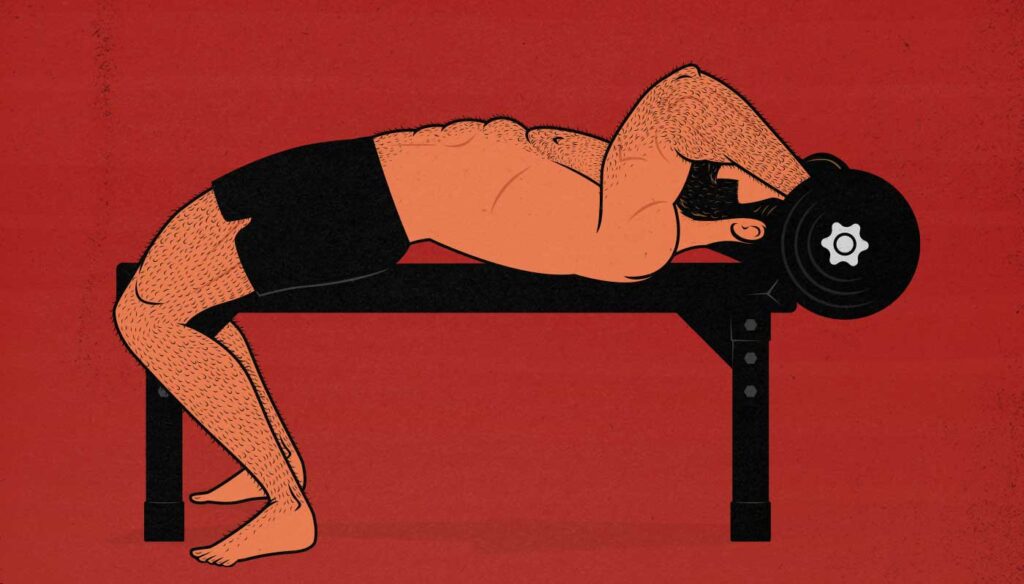
The Skull Crushers Hypertrophy Guide
Skull crushers are one of the best exercises for building bigger triceps, and they’re quite good for increasing bench press strength. They also tend to be fairly easy on the elbows compared to overhead triceps extensions. As a result, they’re popular in both bodybuilding and powerlifting routines.
In this article, we’ll teach you how to do skull crushers, how to add them to your workout routine, how often to do them, how many sets to do, and how many repetitions to do per set.
What Are Skull Crushers?
Skull crushers, also known as nose breakers and lying triceps extensions, are an isolation exercise used to bulk up the triceps and increase bench press strength. Like the guillotine press, they’re one of the rare metalhead exercises where, instead of being named for what they are (like triceps pushdowns), they’re named for what will happen if you drop the weight.
Skull crushers are the most famous triceps exercise, and even then, they’re still underrated. They challenge the triceps through a deep range of motion, which is great for building muscle, and they do so in a way that no compound exercise can replicate.
What Muscles Do Skull Crushers Work?
Skull crushers are an isolation lift that work your triceps. What most people don’t realize, though, is that they work your triceps in a way that’s unique from pressing movements, allowing you to bulk up the long head of your triceps.
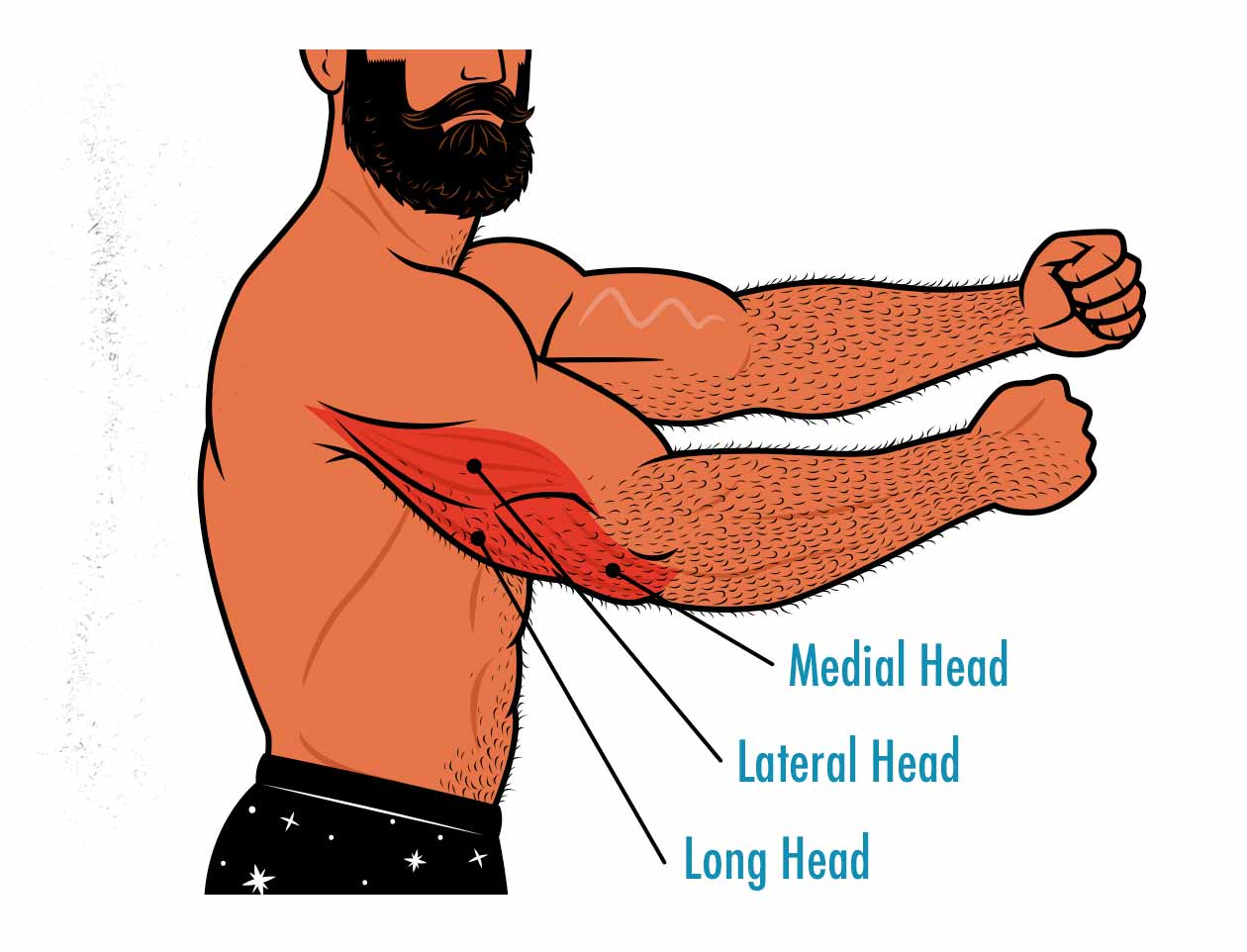
For example, if we look at a study comparing chest and triceps growth, we see that the bench press stimulates about twice as much growth in your chest as in your triceps:

The reason pressing movements aren’t very good at engaging your triceps is because they flex your shoulders, pushing them forwards, whereas the long heads of your triceps extend your shoulders, pulling them backwards. If they fully engaged, they’d be fighting against your chest and shoulders. So it’s the short and medial heads of your triceps that help you lock out your bench press.
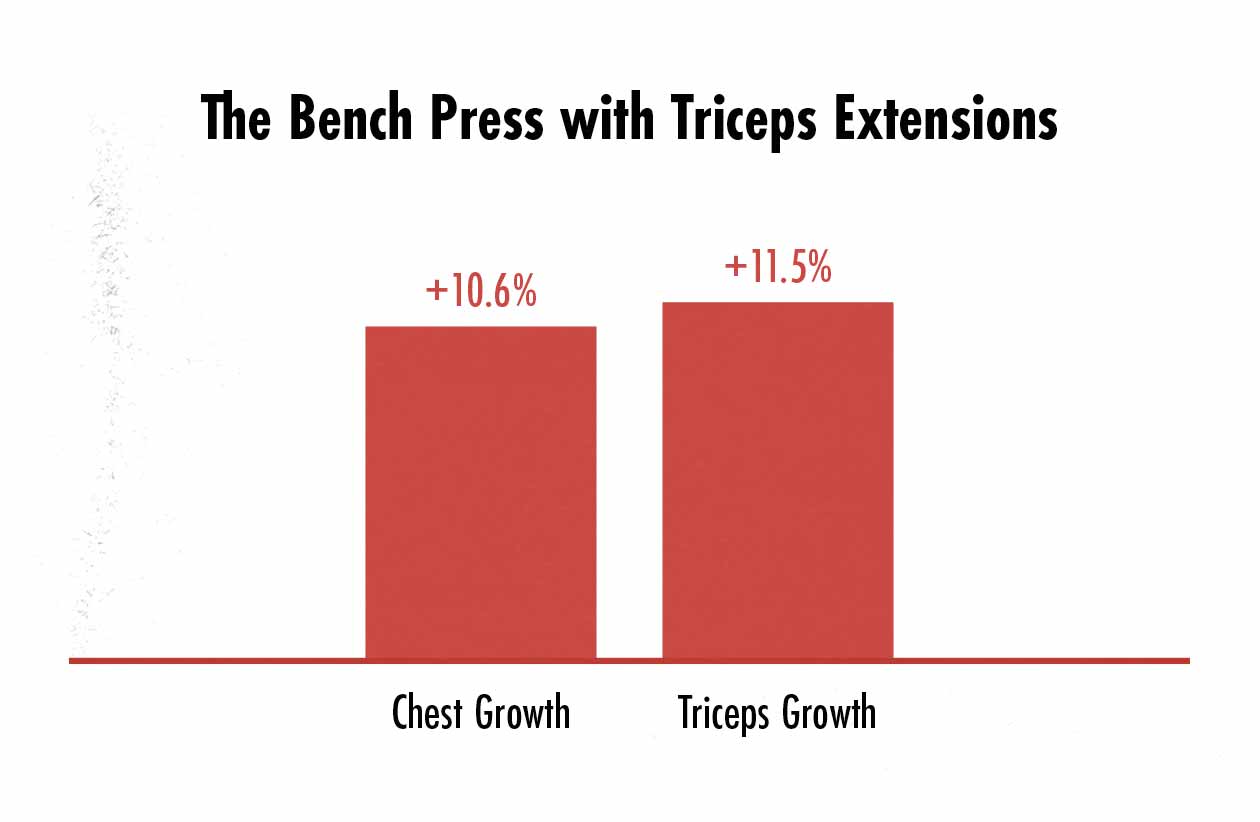
That’s where the skull crusher comes in. It lets you hold your shoulders steady, allowing all three heads of your triceps to engage maximally. That’s why doing skull crushers (and other triceps extension variations) combined with pressing movements helps us build bigger arms and get more balanced muscle growth. And, because skull crushers are also great for your short and medial heads, they can still increase your bench press strength.
How to Do Skull Crushers
To do skull crushers, you lie on a bench, lower the weight down behind your head, and then lift it back up by extending your elbows. They can be done with dumbbells, kettlebells, or a barbell, but most people prefer to use the angled grip of a curl-bar, like so:

Here’s how to do skull crushers:
- Start with the barbell held over your chest, just like you would with a bench press. You can pick it up from safety bars, as I did, from the floor behind your head, or from bench press pins.
- Angle your arms backwards so that the weight is over your forehead. That slight backwards angle will keep tension on your triceps at the lockout, which may slightly improve muscle growth (study). You can see this in the gif above.
- Bring the weight down to the bench behind your head. This gives you a clear range of motion to work within, keeping each repetition consistent, and allowing you to track your strength increases from workout to workout.
- Lift explosively, lower under control. The best tempo for building muscle is lifting the weight fairly explosively and then lowering it down under control. For an example of that, see the gif above.
- Keep your elbows fairly steady. It’s okay to let your elbows drift back a little bit as you lower the weight. Our triceps connect at the shoulders, so moving backwards at the shoulders puts your triceps under greater stretch. However, too much movement at the shoulder joint will turn it into a pullover, involving your lats. We want to keep the skull crusher as a triceps lift.
With that said, skull crushers aren’t a finicky exercise, and you can do them in a number of different ways, all of which will work your triceps. If another technique feels better on your elbows, allows you to lift more weight, or gives you a better triceps pump, go for it.
Programming Skull Crushers
How Often Should You Do Them?
Our muscles grow best when we train them 2–4 times per week, but that doesn’t mean that you need to do skull crushers that often, it just means that you should spread your triceps training out over the week. For example, the triceps exercises in your workout routine might look like this:
- Monday: bench press + skull crushers
- Wednesday: push-ups
- Friday: overhead press + overhead extensions
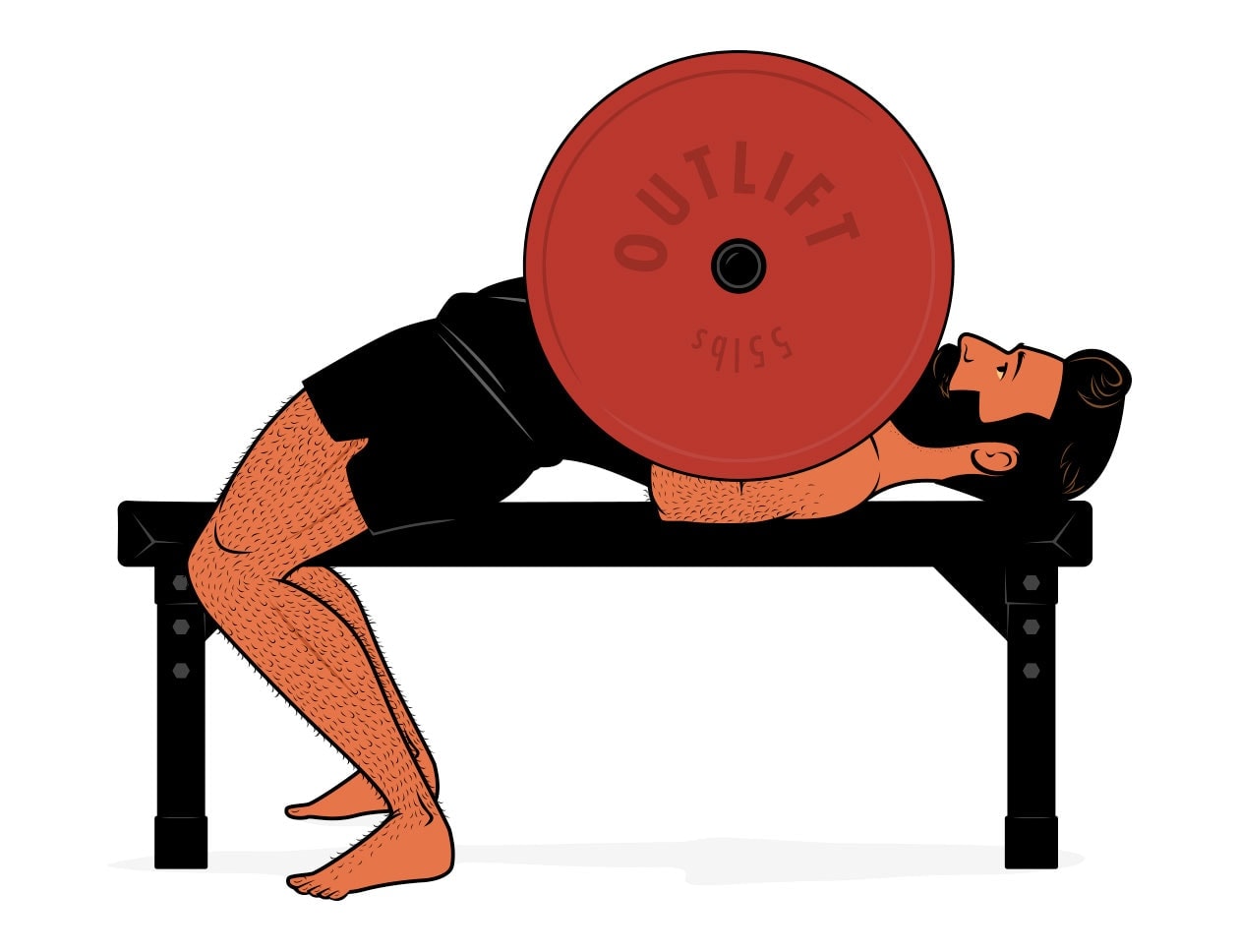
With that routine, you’re only doing skull crushers once per week, but you’re still training your triceps 3 times per week, and with 5 different exercises. That’s a perfectly good way to build bigger and stronger triceps.
If you enjoy doing skull crushers and they aren’t aggravating your elbows, feel free to do them up to 3 times per week, but as a loose rule of thumb, we usually recommend using a variety of different lifts. That way the stress on your joints is more varied, which tends to be good for their longevity, and you’re stimulating your triceps in slightly different ways, which tends to be good for muscle growth.
How Many Sets Should You Do?
Our muscles tend to grow best when we train them 2–4 times per week with 3–8 sets per workout. Said another way, aim for a training volume of 9–18 sets per week, spread out over at least two workouts. Everyone is a little bit different, though, so it’s usually best to start at the lower end of that range and gradually work your way up as needed. Here’s how to do that:
- Adding sets: if your triceps barely feel worked, don’t get much of a pump, hardly get sore, and you’re struggling to gain strength, consider doing more sets.
- Holding steady: if your workouts are giving your triceps a good pump, they feel fatigued at the end, they get a bit sore in the following days, that’s a good sign that you’re doing the right number of sets.
- Removing sets: if your triceps soreness is interfering with your workouts, consider doing fewer sets.
Where this gets tricky is that your triceps are partially worked by pressing movements, and some are better than others. That makes it hard to figure out exactly how to count sets. Does the bench press count as a triceps exercise? Sort of, if your grip is narrow enough. And what about the dumbbell bench press? No, those hardly work your triceps at all. Or what about the close-grip bench press? Kind of. It’s a great triceps exercise, but only for the medial and lateral heads.
So if you’re trying to build bigger triceps, what I’d recommend is doing triceps extensions at least twice per week for at least 3 sets per workout. That’s just 6 sets per week, but when it’s added to your pressing movements, it winds up being a fairly good amount of volume for your triceps. If you’re already on the bench for your bench press, just toss in some skull crushers afterwards. And if you’re already pressing a barbell overhead, toss in some overhead triceps extensions afterwards. That’s often all you need.
How Many Reps Should You Do?
We can build muscle with anywhere from 4–40 reps per set, but most research shows that we get the most growth per set when we do 6–20 reps (meta-analysis). Where this gets a bit more nuanced is that the heavier side of that rep range works better with bigger compound lifts. Think squats, bench presses, deadlifts, overhead presses, and chin-ups. With smaller lifts, such as skull crushers, we want to go lighter. That will limit the stress on your elbow joints, and it should allow you to eke out a bit more muscle growth from every set.
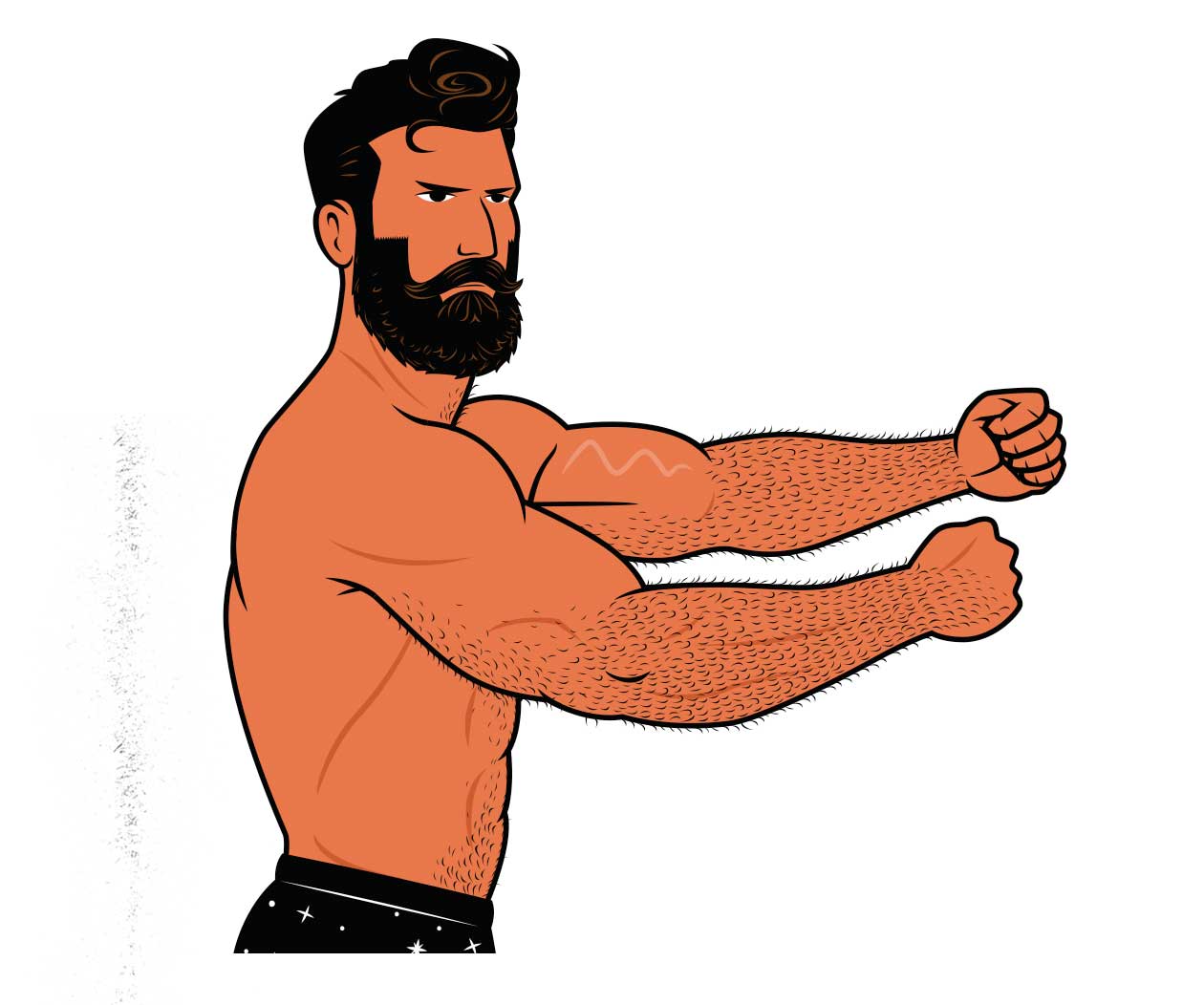
When programming skull crushers, anywhere from 8–30 reps is good. I usually aim for around 15–18 reps per set. Whenever I’m able to get 18 reps, I add enough weight to drop me back down to 15 reps, and then I work my way back up. But feel free to experiment. Try to find a rep range that gives you a great pump, tires your triceps out, and leaves you feeling a bit sore in the following days.
What if Skull Crushers Hurt Your Elbows?
It’s common for triceps isolation exercises to aggravate the elbow joints. Skull crushers tend to be easier on your elbows than overhead extensions, but they can still cause problems. Fortunately, there are a few things you can do, and they tend to work pretty well:
- Do your heavy pressing first. If you start your workouts with the bench press or the overhead press, you’ll warm up your elbow joints using lifts that aren’t likely to aggravate them. You’ll also tire out your triceps, reducing the amount of weight they’ll be able to lift when you do your skull crushers. And doing skull crushers with warmer elbows and lighter weights often gets rid of elbow pain.
- Use a lighter rep range. Following up on the first point, if heavy skull crushers are aggravating your elbows, try doing them in a higher rep range. Doing at least 8 reps per set is usually wise, and feel free to go all the way up to 20 reps.
- Use a different skull crusher variation. If you’re using a straight barbell, try using a curl-bar. If you’re using a curl-bar, try using dumbbells or kettlebells.
- Use a different type of triceps extension. If skull crushers aren’t working for you, try doing triceps pushdowns instead. The stretch on your triceps isn’t quite as good, but most people find them quite a bit easier on their elbow joints.
Skull Crusher Alternatives
Skull crushers are a type of triceps extension, and all triceps extensions are similarly good at bulking up the triceps. Here are three great alternatives, each with different pros and cons:
- Overhead extensions: if you have good shoulder mobility and sturdy elbows, overhead extensions will train your triceps under an even deeper stretch, theoretically stimulating even more muscle growth.
- Triceps pushdowns/pressdowns: if skull crushers are hurting your elbows, try triceps pushdowns. They won’t work your triceps through as deep of a stretch, and so they aren’t quite as ideal, but they tend to be quite a bit easier on the elbows.
- The close-grip bench press: if triceps extensions aren’t working for you, no problem. Try the close-grip bench press. It’s not quite as good at stimulating the triceps, but it’s even easier on the elbow joints.
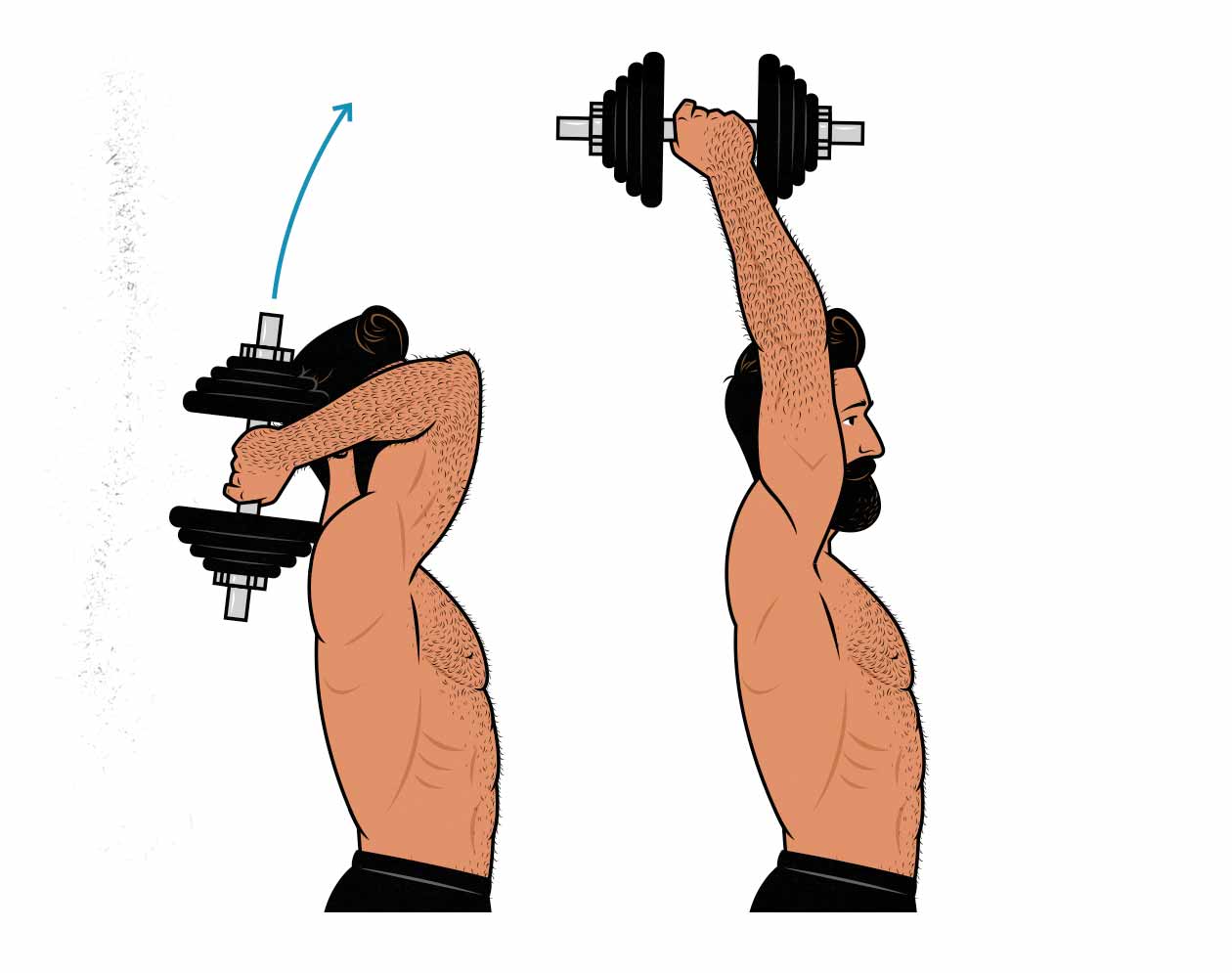
Also remember that you can do skull crushers with a barbell, curl-bar, kettlebells, or dumbbells. And you can do them in a variety of rep ranges.
Summary
Skull crushers are a sturdy triceps isolation exercise that allow you to lift quite a lot of weight through a deep range of motion. As a result, they’re often considered one of the best exercises for building bigger triceps. They’re also a great accessory lift for increasing your bench press strength, especially if you struggle at the lockout.

A good way to add skull crushers into your workout routine is to do them after your bench press. The bench press will warm up your elbows and work your triceps a little bit, and then you can finish them off with 3–4 sets of skull crushers, doing around 15 reps per set. If you do that twice per week, mixing some sort of pressing movement with some sort of triceps extension, you can maximize the rate of growth in your triceps.

If you want a customizable workout program (and full guide) that builds these principles in, then check out our Outlift Intermediate Bulking Program. If you liked this article, you’ll love the full program.



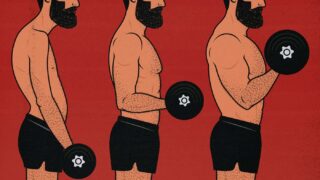
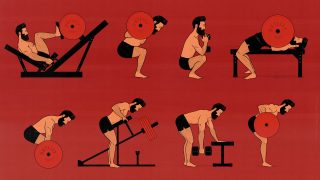
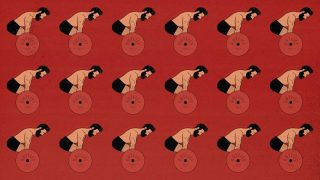
Hi Shane, nice write up. I have a few questions if you would please respond:
Can we say that overhead extensions are a seated/standing version of skull crusher?
Is skull crusher also known as “nose breaker” or that is another exercise?
Do you think that parallel bar dips work triceps long head really well?
Many thanks in advance.
The skull crusher is a lying triceps extension done on a bench. The overhead extension is an overhead triceps extension, typically done standing. The pushdown is a triceps extension with the elbows held closer to your sides, again, typically done standing. So there are different ways of doing standing triceps extensions. But yeah, the overhead extension is one of those ways. And all triceps extensions will work all three heads of your triceps, so feel free to use them interchangeably.
Whoa, that’s amazing, I hadn’t heard of the nose breaker. Yeah, it’s the same exercise as the skull crusher, just a different name for it. I’ll add that to the article.
Dips work the triceps, but as with other pressing movements, the shoulder flexes. That means that the long head of the triceps would interfere with the movement, and so it doesn’t fully engage. To work the long head of your triceps, it’s much better to do triceps extensions.
Thanx for the responses Shane. I used to think that parallel bar dips work long head too. But now I shall include skull crushers also.
Do you think crushers can be used in place of parallel bar dips bcoz it works long head also?
If you’re doing dips for your triceps, then yeah, skull crushers are a better exercise. But keep in mind that your dips are also really good for training your lower chest under a deep stretch. That’s what I’d use dips for.
Yes Shane, dips have advantage in pecs development.
Following on your article about working a muscle from a stretched position, I believe that the JM press might be superior to the skull crushers (even more so with dumbbells!).
The bottom part of the movement places a far greater stretch (at least from my own experience) as compared to the skull crushers. Irritates the elbows to a lesser degree and allows you to push more weight. Another huge benefit that I have come to realize is the strength curve – the elbow is moving through space which allows you to manipulate the movement to increase the tension on the triceps by be extending the tension for most of the ROM.
One downside is that it takes a while to master the execution of proper technique and understanding how you should manipulate the elbow movement to best suit your leverage and goals.
I never felt my triceps work as much on any exercise as I have on the JM Press!
Hey Joel, I hear ya. The JM Press is a great exercise, just keep in mind that it’s a pressing movement. With pressing movements, we flex our shoulders, which is the opposite of what the long head of the triceps does, preventing it from fully engaging. So with the JM Press, similar to a diamond push-up or close-grip bench press, it’s great for working the lateral and medial heads of the triceps, but it doesn’t work the long head very well.
Thing is, the lateral and medial heads are already worked fairly well by most other pressing movements: the bench press, overhead press, and so on. So if you already have those lifts in your routine, you might not need yet another lift that emphasizes the lateral and medial heads of your triceps.
The exception to this is for powerlifting and strength training. It’s the lateral and medial heads of the triceps that affect our bench press strength, so exercises that emphasize those heads will be perfectly good for increasing your bench press strength. When I was working towards a 315 bench, I used a lot of close-grip bench presses for exactly that reason.
But if your goal is to build big and balanced triceps, then you’ll want something that does a better job of training all heads of the triceps, such as a skull crusher, triceps pushdown, or overhead extension.
Thanks for this! I was also wondering if a skull crusher done on an decline angle would activate my long head to a greater degree as compared to a flat bench?
If you angle your arms backwards, as shown in the illustrations and gif, then you’ll get the benefit of keeping tension on the long head of your triceps throughout the range of motion, similar to using a decline bench. And with a decline bench, you actually get less of a stretch on the long head because your arm isn’t angled (as far) backwards. But that’s not a big deal. It’s not a big difference. I’d say go with your preference 🙂
Shane I just want to thank you guys for creating this website. The articles are informative and well-written, the images and design is beautiful and the idea to add hypertrophy lifts to standard big 5 was new and valuable.
Great resource!
Thank you so much, Yakov!
What do you think about skull crushers on an incline bench at say 45 degrees? I’m surprised you didn’t mention them in this (very thorough!) article. I have to be careful with my elbows, but that seems like the angle would offer a better stretch without risking the elbows as much as with overhead extensions.
That can be a great variation, yeah. Just depends on how sturdy you can get it and how good it feels.
I don’t think the overhead extension really RISKS the elbows. It’s not bad for them or anything. It’s just that if your elbows ALREADY hurt, that might be a movement where you feel that hurt. If your elbows don’t hurt, overhead should be totally fine, giving you a greater stretch.
Incli